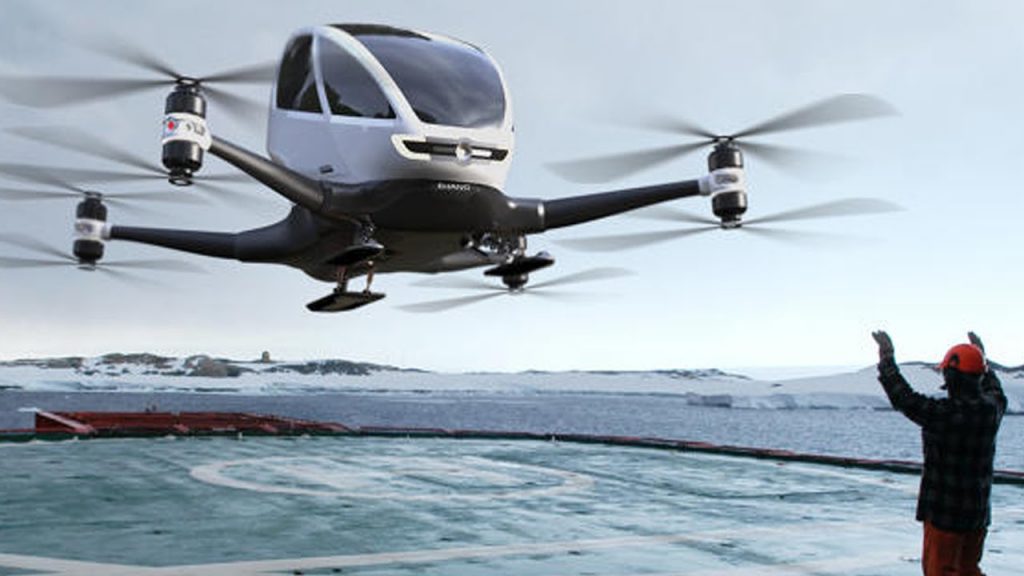The European Commission-backed SESAR programme, which coordinates European Union R&D activities in air traffic management, has launched a two-year project to investigate the applications of drones ranging from air taxi operations to emergency services support.
The new project, Air Mobility Urban – Large Experimental Demonstration (AMU-LED), will take place in Santiago de Compostela in Spain, Cranfield in the UK and the Dutch cities of Amsterdam and Rotterdam.
The Single European Sky ATM Research (SESAR) demonstration project includes input from EHang, the Chinese developer of the world’s first passenger-grade driverless and electric aerial vehicle. A partnership of Indra and Thales is managing the project on behalf of SESAR.
SESAR says planned exercises within AMU-LED include more than 100 flight hours combining different applications such as air taxi operations and emergency services support.
The project will also explore how the use of drones could de-congest roads, improve transportation of people and goods, reduce travel times, cut pollution and reduce traffic accidents.
Data obtained from the different tests is expected to support the regulatory framework for urban air mobility.
Other project partners include Airbus, Cranfield University, Boeing Research & Technology-Europe, Anra Technologies and Tecnalia.





